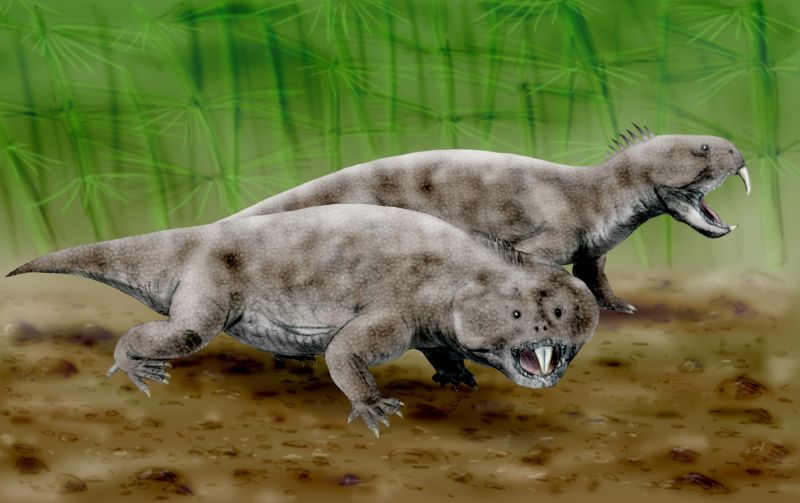Paleontologists have identified a new genus and species of hyperodapedontine rhynchosaur from several specimens unearthed in central Wyoming, the United States.
Life reconstruction of Beesiiwo cooowuse with the pseudosuchian Heptasuchus clarki in the background representing the known fauna from the lower carbonate unit of the Popo Agie Formation, Wyoming, the United States. Image credit: Gabriel Ugueto.
Beesiiwo cooowuse roamed our planet during the Carnian age of the Late Triassic epoch, some 230 million years ago.
The ancient reptile belonged to Hyperodapedontinae, a group of extinct herbivorous reptiles within the family Rhynchosauridae.
“The Late Triassic Carnian age is a critical interval in the diversification of many lineages that will play a prominent role throughout the Mesozoic (e.g., Mammaliaformes, Crocodylomorpha, Dinosauria),” said Adam Fitch, a paleontologist at Virginia Tech and the University of Wisconsin-Madison, and his colleagues.
“However, fossiliferous terrestrial strata recording this age are largely absent in the northern hemisphere.”
“One of the clades that has limited representation in this region is Hyperodapedontinae, a group of stem-archosaurian reptiles that had a broad distribution across southern Pangaea throughout the Carnian and very earliest Norian (i.e., no younger than 225.4 million years).”
The fossilized remains of Beesiiwo cooowuse were recovered from the Popo Agie Formation in Wyoming, the United States.
“The type specimen was collected as clasts within a 0.5-1 m thick microconglomerate in the lower carbonate unit of the Popo Agie Formation near Hole in the Wall, Southern Bighorn Mountains, Wyoming,” the paleontologists said.
“The referred material was collected as rounded to partially rounded clasts in a 0.5–2 m thick microconglomerate also referred to the lower carbonate unit of the Popo Agie Formation, Cottonwood Creek near Alcova, Wyoming.”
The fossils represent a significant and definite presence of rhynchosaurs in western North America during the early Late Triassic epoch.
“Beesiiwo cooowuse drastically expand our rhynchosaur diversity within North America and demonstrate the presence of both North American endemic and cosmopolitan hyperodapedontines in western North America,” the researchers said.
“New material from the upper Chugwater Group of central Wyoming demonstrates a greater North American rhynchosaur diversity than was previously appreciated.”
“We find support for an endemic North American clade in addition to a contemporaneous presence of later-diverging members of a cosmopolitan clade within North America.”
“The Popo Agie material represents the largest definitive record of rhynchosaurs in North America.”
Source: sci.news












